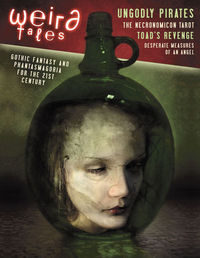Opening Control
September 6th, 2011My Homeless Moon cohort Justin Howe had a neat writing post last week about openings. Justin is a first-reader for a Hugo-award winning magazine, so he has seen a ton of story openings, and he’s written a few cool ones himself.
In his post, he articulates the way he thinks writers in openings establish that “trust” with the reader. He calls it “control.” For example, not trying to do too much into the opening; not cramming in lots of introspection or backstory or setting.
That’s a neat way to articulate it. I often call it the prose feeling “assured.” As a reader you can tell, in a great opening, that you’re in expert hands. Like the writer knows exactly where they want to lead you. What things they need to lay out for you in order to have you follow them there, with nothing that’s unnecessary or extra.
Thinking about “control” or “assured-ness” in openings reminded me of a nugget I read a while back. It’s via Bradley P. Beaulieu, a new fantasy novelist with a dozen pro story sales, who’s also written some neat articles on writing in the SFWA Bulletin.
He went to Clarion years ago and, in his awesome post of nuggets from the whole six weeks of the workshop, related this one from veteran writer Nancy Kress (whose books on writing I love):
It’s more important to be interesting at the beginning of a story than clear. The common tendency at the beginning of a story is to over-explain so that the reader “understands.”
Well, the reader doesn’t really care about understanding early on. They care about an interesting character in an interesting situation, something to entertain them and make them want to read on, and that’s almost always not the same as explaining to the Nth detail what’s going on and what came before.
That’s a slightly different angle on it than Justin’s “control,” but it’s talking about the same end. It’s a notch beyond the common writerly advice of honing the purpose of every thing you put in an opening. It’s honing your overall bundle of purposes there.
It’s sticking to the bare minimum of purposes to be achieved in your opening. Having them be enough that the opening should be interesting. But exercising control as far as which purposes you plan to achieve in the opening and which you set aside to accomplish later in the story.
Having that sort of metered approach to the set of things you’re trying to accomplish in the opening also means you probably won’t have too much background/etc or be over-explaining.
Insightful food for writerly thought the next time you craft an opening.





